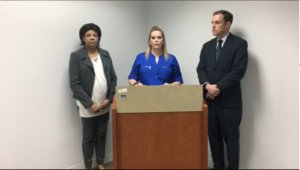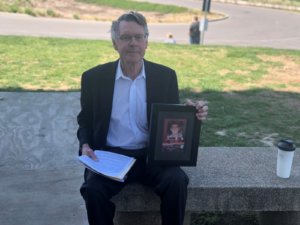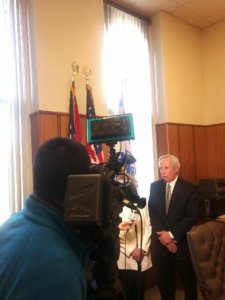Throughout the second week of Medicaid Awareness Month, advocates across the country highlighted the significant role Medicaid plays in combating the opioid crisis – most notable being that in 2014 Medicaid paid for one-fourth of addiction treatment nationwide – and spoke out against Republican proposals to weaken and cut Medicaid.

In Ohio, Chillicothe Mayor Luke Feeney, Cheryl Beverly, Operator of Cheryl’s House of Hope, and Michelle McAllister, Coordinator for the Heroine Partnership Project, held a press conference to discuss how changes to the state’s Medicaid program would leave over 150,000 Ohioans that suffer from substance abuse disorders and mental illness without care.
Protect Our Care released an opioid crisis fact sheet, showing how Medicaid provides access to treatment and gives states more resources in combating the epidemic.

In Tennessee, Chip Forrester, a father who lost his son to opioids, held a roundtable discussion about the crisis and how restricting access to Medicaid threatens lives and impedes states’ ability to respond to the epidemic.
The Center on Budget and Policy Priorities released a report analyzing how Better Integration of Medicaid and Federal Grant Funding Would Improve Outcomes for People with Substance Use Disorders.

[CBPP]

In Ohio, Jefferson County Commissioner Thomas Graham and health care leaders in Steubenville held a press conference to talk discuss how Medicaid benefits thousands of Ohioans suffering from substance abuse disorders.
And in Alaska and West Virginia, advocates held a virtual postcard sending party throughout the week to send notes thanking Sen. Lisa Murkowski for supporting Medicaid and encouraging her to continue doing so, culminating in a stand up event outside Sen. Murkowski’s Anchorage office emphasizing the role Medicaid plays in addressing the opioid crisis, and a press conference with faith leaders which focused on the opioid crisis and how West Virginia’s faith community can address substance abuse disorders in the state, respectively.

